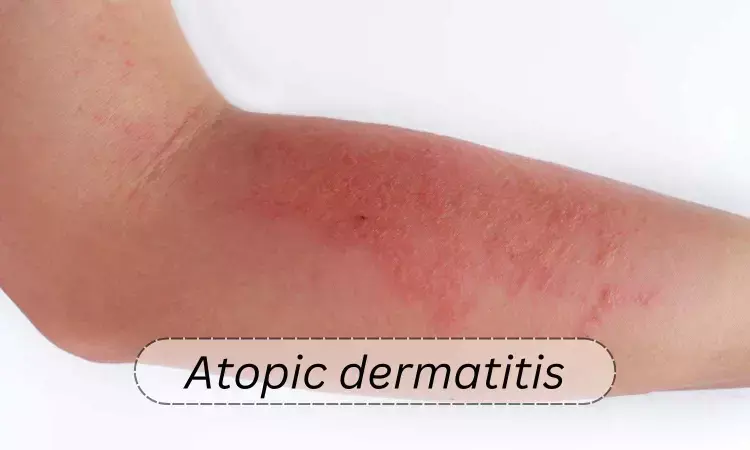- Home
- Medical news & Guidelines
- Anesthesiology
- Cardiology and CTVS
- Critical Care
- Dentistry
- Dermatology
- Diabetes and Endocrinology
- ENT
- Gastroenterology
- Medicine
- Nephrology
- Neurology
- Obstretics-Gynaecology
- Oncology
- Ophthalmology
- Orthopaedics
- Pediatrics-Neonatology
- Psychiatry
- Pulmonology
- Radiology
- Surgery
- Urology
- Laboratory Medicine
- Diet
- Nursing
- Paramedical
- Physiotherapy
- Health news
- Fact Check
- Bone Health Fact Check
- Brain Health Fact Check
- Cancer Related Fact Check
- Child Care Fact Check
- Dental and oral health fact check
- Diabetes and metabolic health fact check
- Diet and Nutrition Fact Check
- Eye and ENT Care Fact Check
- Fitness fact check
- Gut health fact check
- Heart health fact check
- Kidney health fact check
- Medical education fact check
- Men's health fact check
- Respiratory fact check
- Skin and hair care fact check
- Vaccine and Immunization fact check
- Women's health fact check
- AYUSH
- State News
- Andaman and Nicobar Islands
- Andhra Pradesh
- Arunachal Pradesh
- Assam
- Bihar
- Chandigarh
- Chattisgarh
- Dadra and Nagar Haveli
- Daman and Diu
- Delhi
- Goa
- Gujarat
- Haryana
- Himachal Pradesh
- Jammu & Kashmir
- Jharkhand
- Karnataka
- Kerala
- Ladakh
- Lakshadweep
- Madhya Pradesh
- Maharashtra
- Manipur
- Meghalaya
- Mizoram
- Nagaland
- Odisha
- Puducherry
- Punjab
- Rajasthan
- Sikkim
- Tamil Nadu
- Telangana
- Tripura
- Uttar Pradesh
- Uttrakhand
- West Bengal
- Medical Education
- Industry
High Risk of Ocular Surface Disease in Children with Atopic Dermatitis on Dupilumab, Study Finds

Netherlands: A recent real-world, long-term study from the BioDay Registry has highlighted a significant incidence of Dupilumab-Associated Ocular Surface Disease (DAOSD) in pediatric patients receiving dupilumab for atopic dermatitis (AD). The findings, published in Clinical & Experimental Allergy, emphasize the need for heightened vigilance in monitoring ocular symptoms, particularly in younger children who may have difficulty reporting their symptoms, potentially leading to delayed diagnosis.
The researchers reported that approximately one-third of pediatric atopic dermatitis patients receiving dupilumab developed DAOSD, with tarsal conjunctivitis present in all cases requiring treatment. They further noted that pruritus (75.0%), redness (72.2%), and tearing (58.3%) were the most commonly reported symptoms. Additionally, patients with elevated serum IgE levels (≥ 3000 kU/L) had a significantly higher risk of developing DAOSD (OR 4.65). Among those affected, 30% required anti-inflammatory therapy for symptom management.
While Dupilumab-Associated Ocular Surface Disease is a frequently observed side effect in pediatric atopic dermatitis patients receiving dupilumab, long-term real-world safety data remains limited. To address this gap, Marlies de Graaf, Department of Dermatology and Allergology, National Expertise Center for Atopic Dermatitis, University Medical Center Utrecht, Utrecht University, Utrecht, the Netherlands, and colleagues examined the incidence of DAOSD in pediatric AD patients undergoing dupilumab treatment while also identifying potential risk factors associated with its development.
For this purpose, the researchers conducted a prospective study on pediatric AD patients (3–17 years) receiving dupilumab, assessing ocular symptoms every 4–12 weeks. Initial DAOSD management included lubricating and antihistamine eye drops or tacrolimus ointment, while persistent cases required ocular anti-inflammatory therapy and ophthalmological evaluation. Univariable and multivariable regression analyses identified predictors for DAOSD development.
Key Findings:
- The study included 104 pediatric AD patients (mean age: 11.7 ± 4.0 years) with a median follow-up of 70.5 weeks.
- 34.6% (36/104) of patients developed DAOSD, with 30.6% (11/36) requiring ocular anti-inflammatory therapy.
- DAOSD occurrence was not influenced by age or pre-existing allergic conjunctivitis.
- The most common ocular symptoms were pruritus (75.0%), redness (72.2%), and tearing (58.3%).
- Tarsal conjunctivitis was present in all patients requiring ocular anti-inflammatory therapy.
- Baseline serum IgE levels ≥ 3000 kU/L were significantly associated with DAOSD development (OR 4.65).
- 3.8% (4/104) of patients discontinued dupilumab due to DAOSD.
"The long-term, real-world study finds that 34.6% of pediatric AD patients on dupilumab develop DAOSD, with elevated baseline serum IgE (≥ 3000 kU/L) as a potential predictor," the researchers wrote.
"The high incidence highlights the need for careful monitoring of ocular symptoms, especially in young children who may struggle to report them, risking delayed diagnosis," they concluded.
Reference:
A. Zuithoff, N. P. Dupilumab-Associated Ocular Surface Disease in Paediatric Atopic Dermatitis Patients: Results From the BioDay Registry. Clinical & Experimental Allergy. https://doi.org/10.1111/cea.70025
Dr Kamal Kant Kohli-MBBS, DTCD- a chest specialist with more than 30 years of practice and a flair for writing clinical articles, Dr Kamal Kant Kohli joined Medical Dialogues as a Chief Editor of Medical News. Besides writing articles, as an editor, he proofreads and verifies all the medical content published on Medical Dialogues including those coming from journals, studies,medical conferences,guidelines etc. Email: drkohli@medicaldialogues.in. Contact no. 011-43720751


